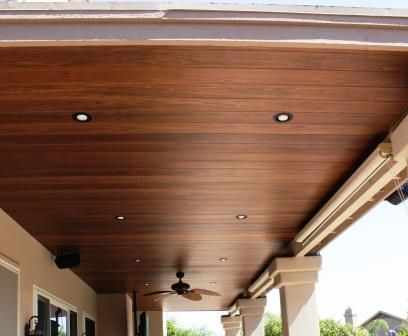A porch tongue and groove ceilings can transform your outdoor living area into a charming retreat. Discover how to install and maintain this classic feature to elevate your porch’s appeal.

What is a Porch Tongue And Groove Ceiling?
A porch tongue and groove ceiling adds a touch of elegance and warmth to any porch. This timeless architectural feature consists of narrow boards with a protruding edge (tongue) that fits into a groove of the adjacent board. The result is a seamless surface that enhances the aesthetic appeal of your outdoor space.
Benefits of Installing a Porch Tongue And Groove Ceiling
Installing a porch tongue and groove ceiling offers several advantages:
- Aesthetic Appeal: It adds a rustic or polished look, depending on the type of wood and finish chosen.
- Weather Resistance: Properly sealed and maintained, it can withstand outdoor conditions for years.
- Insulation: Provides some thermal insulation and can help reduce energy costs.
- Versatility: Suitable for various porch designs, from traditional to contemporary.
Read too: Understanding and Dealing with Ants in the Ceiling Spaces: Navigating the Intrusion
Choosing the Right Material for Your Porch Tongue And Groove Ceiling
When selecting materials for your porch tongue and groove ceiling, consider:
- Wood Types: Cedar, pine, and cypress are popular choices due to their durability and natural beauty.
- Finish Options: Stained or painted finishes offer different aesthetics and protection levels.
Installing a Porch Tongue And Groove Ceiling
Follow these steps for a successful installation:
- Prepare the Surface: Ensure the porch framework is structurally sound and free of debris.
- Measure and Cut: Accurately measure each board and cut to fit using a circular saw or miter saw.
- Install Boards: Start at one corner and work your way across, fitting the tongue into the groove of each subsequent board.
- Securing Boards: Use nails or screws to secure each board in place, ensuring they are evenly spaced.
- Finish and Seal: Apply a suitable finish to protect the wood from moisture and UV damage.
Maintaining Your Porch Tongue And Groove Ceiling
To keep your porch tongue and groove ceiling looking its best:
- Regular Cleaning: Sweep away debris and periodically wash with a mild soap solution.
- Inspect for Damage: Check for signs of water damage or wood deterioration.
- Reapply Finish: Every few years, reapply a protective finish to maintain durability.
Enhancing Your Outdoor Living Experience
A well-designed porch tongue and groove ceiling enhances the overall appeal and value of your home. Whether you enjoy quiet evenings or entertaining guests, this classic feature provides a stylish backdrop for all your outdoor activities.
Conclusion
In conclusion, a porch tongue and groove ceilings combines aesthetic charm with practical benefits, making it a popular choice for homeowners looking to upgrade their outdoor spaces. By choosing the right materials, following proper installation techniques, and maintaining regular care, you can enjoy the beauty and durability of this timeless architectural element for years to come.
